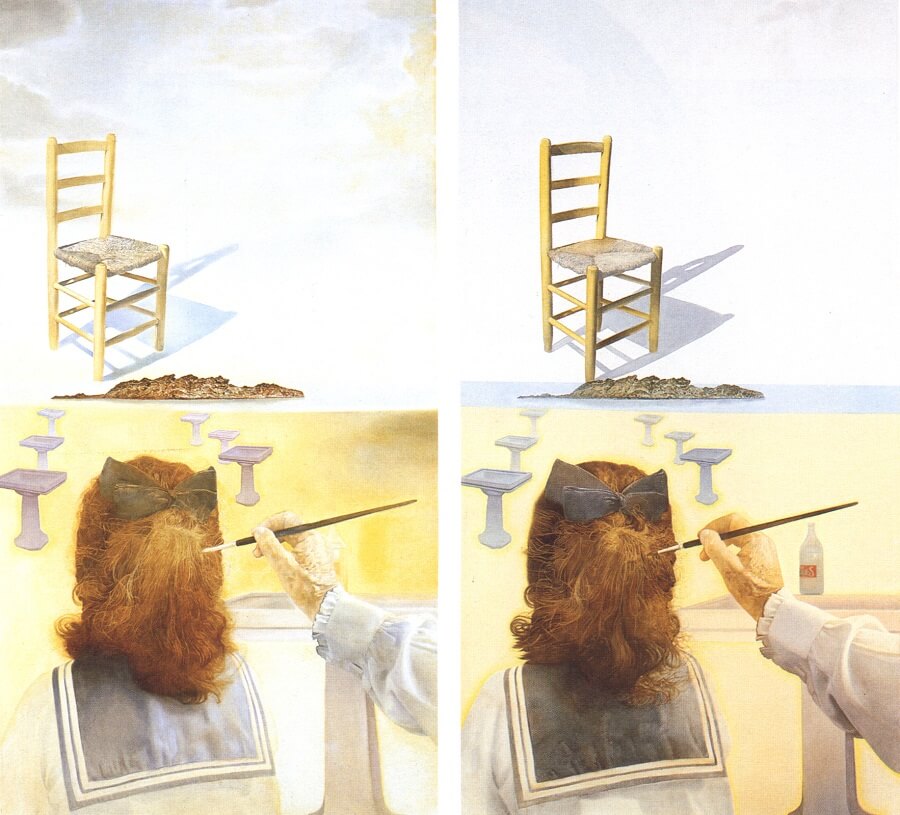The Chair, 1975 by Salvador Dali

Dali was constantly attempting to find new techniques that would allow him to express himself in unique, more visually arresting ways. In Tuna Fishing Dali used photography projected on to his canvas to recreate images, such as the figure of the Hellenistic statue on the left, in perfect detail. In the Seventies, he began to experiment with holography and stereoscopy. Painted in 1975, The Chair is one of Dali's most successful stereoscopic paintings. The idea of stereoscopy was to combine a left and right image so that a three-dimensional image is achieved. The images were combined by looking through a stereoscope. A special one was designed for The Chair as the works were 13 ft (9 m) tall.
The two paintings that make up The Chair are near identical pictures, differing only in their definition and light. When viewed together the images coalesce to form a solid looking chair that hangs in the air, while Dali's hand appears in the foreground with intense detail, liver warts and all. Dali wanted to achieve a sense of distance in the painting to emphasize the three-dimensional quality, so he placed the pedestals in decreasing size as if they were disappearing into the distance.























